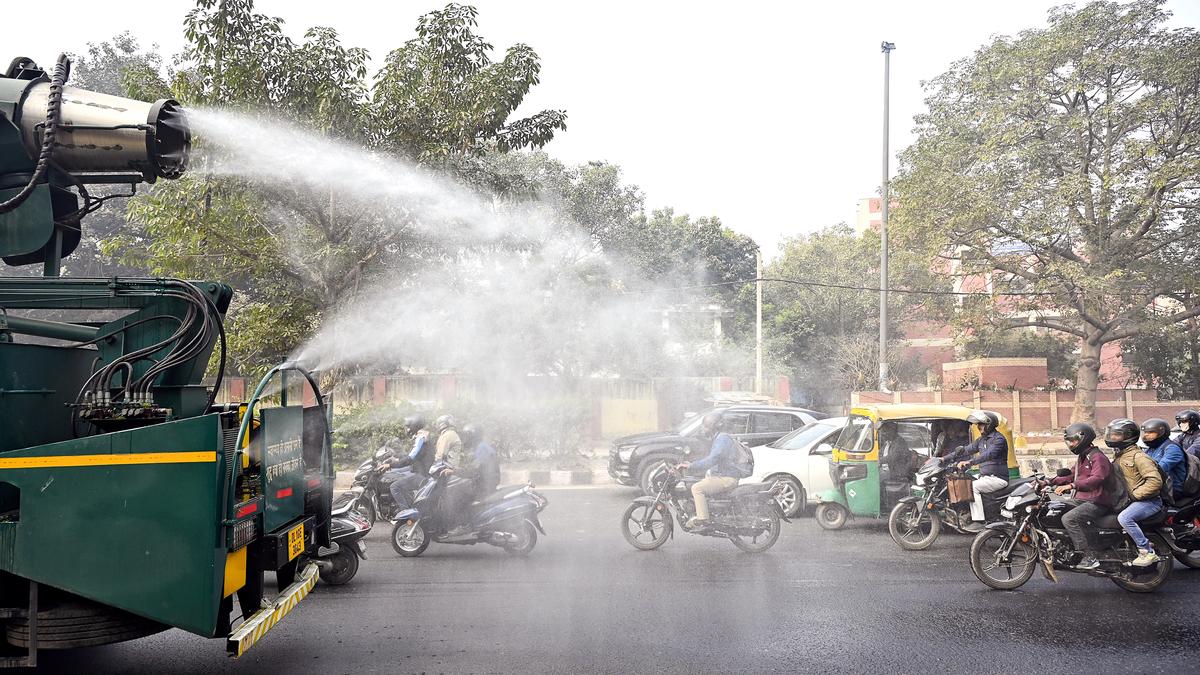
Delhi's air quality improves slightly, nears 'poor' category
The Hindu
Delhi's pollution levels slightly decrease, nearing 'poor' category, with AQI at 301, haze persists, health risks remain.
Pollution levels in Delhi decreased slightly on Wednesday (November 27, 2024) morning with the air quality nearing the 'poor' category.
At 9 am, Delhi's Air Quality Index (AQI) was recorded at 301, compared to a reading of 343 at 9 am on Tuesday, according to Central Pollution Control Board (CPCB) data. A thick layer of haze continued to blanket the national capital.
Why is Delhi’s air quality deteriorating? | Explained
An AQI between zero and 50 is considered 'good', 51 and 100 'satisfactory', 101 and 200 'moderate', 201 and 300 'poor', 301 and 400 'very poor', and 401 and 500 'severe'.
Of the 38 monitoring stations that recorded air quality data, none reported levels in the severe category, according to the CPCB data.
On Tuesday (November 26, 2024) 17 of the national capital's 39 monitoring stations recorded air quality in the 'severe' category.
An AQI of 400 or higher -- classified as 'severe' -- poses significant health risks to both healthy individuals and those with pre-existing medical conditions.

“Writing, in general, is a very solitary process,” says Yauvanika Chopra, Associate Director at The New India Foundation (NIF), which, earlier this year, announced the 12th edition of its NIF Book Fellowships for research and scholarship about Indian history after Independence. While authors, in general, are built for it, it can still get very lonely, says Chopra, pointing out that the fellowship’s community support is as valuable as the monetary benefits it offers. “There is a solid community of NIF fellows, trustees, language experts, jury members, all of whom are incredibly competent,” she says. “They really help make authors feel supported from manuscript to publication, so you never feel like you’re struggling through isolation.”

Several principals of government and private schools in Delhi on Tuesday said the Directorate of Education (DoE) circular from a day earlier, directing schools to conduct classes in ‘hybrid’ mode, had caused confusion regarding day-to-day operations as they did not know how many students would return to school from Wednesday and how would teachers instruct in two modes — online and in person — at once. The DoE circular on Monday had also stated that the option to “exercise online mode of education, wherever available, shall vest with the students and their guardians”. Several schoolteachers also expressed confusion regarding the DoE order. A government schoolteacher said he was unsure of how to cope with the resumption of physical classes, given that the order directing government offices to ensure that 50% of the employees work from home is still in place. On Monday, the Commission for Air Quality Management in the National Capital Region and Adjoining Areas (CAQM) had, on the orders of the Supreme Court, directed schools in Delhi-NCR to shift classes to the hybrid mode, following which the DoE had issued the circular. The court had urged the Centre’s pollution watchdog to consider restarting physical classes due to many students missing out on the mid-day meals and lacking the necessary means to attend classes online. The CAQM had, on November 20, asked schools in Delhi-NCR to shift to the online mode of teaching.









